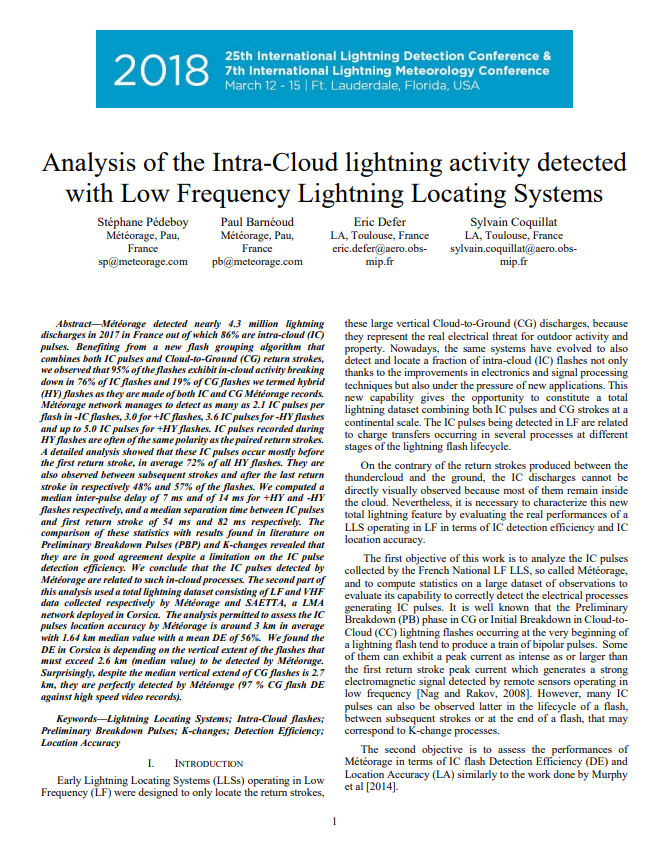Analysis of the Intra-Cloud lightning activity detected with Low Frequency Lightning Locating Systems
This study was published at the 25th International Lightning Detection Conference in the United States.
Abstract
METEORAGE detected nearly 4.3 million lightning discharges in 2017 in France out of which 86% are intra-cloud (IC) pulses.
Benefiting from a new flash grouping algorithm that combines both IC pulses and Cloud-to-Ground (CG) return strokes, we observed that 95% of the flashes exhibit in-cloud activity breaking down in 76% of IC flashes and 19% of CG flashes we termed hybrid (HY) flashes as they are made of both IC and CG METEORAGE records.
METEORAGE network manages to detect as many as 2.1 IC pulses per flash in -IC flashes, 3.0 for +IC flashes, 3.6 IC pulses for -HY flashes and up to 5.0 IC pulses for +HY flashes. IC pulses recorded during HY flashes are often of the same polarity as the paired return strokes.
A detailed analysis showed that these IC pulses occur mostly before the first return stroke, in average 72% of all HY flashes. They are also observed between subsequent strokes and after the last return stroke in respectively 48% and 57% of the flashes. We computed a median inter-pulse delay of 7 ms and of 14 ms for +HY and -HY flashes respectively, and a median separation time between IC pulses and first return stroke of 54 ms and 82 ms respectively.
he comparison of these statistics with results found in literature on Preliminary Breakdown Pulses (PBP) and K-changes revealed that they are in good agreement despite a limitation on the IC pulse detection efficiency. We conclude that the IC pulses detected by METEORAGE are related to such in-cloud processes.
The second part of this analysis used a total lightning dataset consisting of LF and VHF data collected respectively by METEORAGE and SAETTA, a LMA network deployed in Corsica. The analysis permitted to assess the IC pulses location accuracy by METEORAGE is around 3 km in average with 1.64 km median value with a mean DE of 56%.
We found the DE in Corsica is depending on the vertical extent of the flashes that must exceed 2.6 km (median value) to be detected by METEORAGE.
Surprisingly, despite the median vertical extend of CG flashes is 2.7 km, they are perfectly detected by METEORAGE (97 % CG flash DE against high speed video records).

